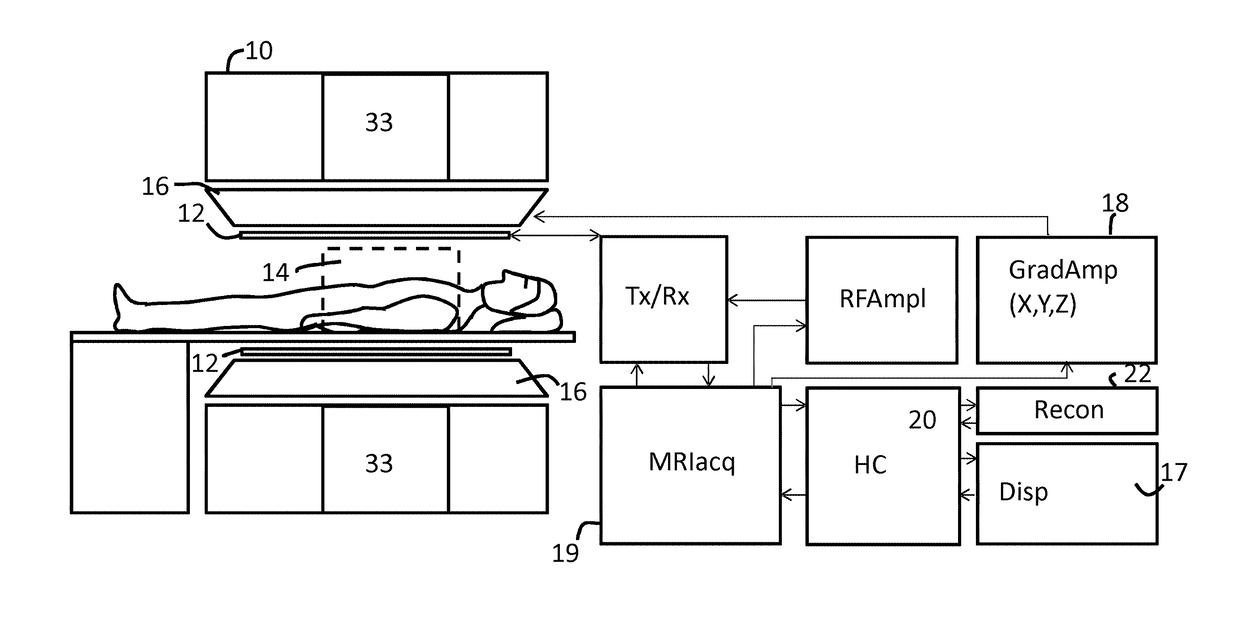Method estimating a pseudo Hounsfield Unit value
a pseudo-housfield value and unit value technology, applied in the field of magnetic resonance imaging, can solve the problems of not being able to cover the anatomical variations between patients, not being able to generate estimated electron density maps from magnetic resonance images, and not being able to achieve strong correlation of intensity values for training
- Summary
- Abstract
- Description
- Claims
- Application Information
AI Technical Summary
Benefits of technology
Problems solved by technology
Method used
Image
Examples
Embodiment Construction
[0049]Like numbered elements in these figures are either equivalent elements or perform the same function. Elements which have been discussed previously will not necessarily be discussed in later figures if the function is equivalent.
[0050]FIG. 1 shows a comparison between a pseudo CT image according to the prior art (a), a true CT image (b) and a pseudo CT image derived according to an embodiment of the invention (c). FIG. 1a is generated by average HU value assignment to water and fat (Dixon-reconstruction), air (body outline detection) and cortical and cancellous bone (segmentation+threshold). FIG. 1c is generated by interpolation of average CT values based on relative prevalence as proposed using bone segmentation. For the generation of FIG. 1c no body-outline detection was used. FIG. 1c shows a lot more detail in bone tisse 1 compared to FIG. 1a. Furthermore, FIG. 1c is visually more similar to FIG. 1b then FIG. 1a.
[0051]FIG. 2 shows intensity values in Dixon reconstructed ima...
PUM
 Login to View More
Login to View More Abstract
Description
Claims
Application Information
 Login to View More
Login to View More - R&D
- Intellectual Property
- Life Sciences
- Materials
- Tech Scout
- Unparalleled Data Quality
- Higher Quality Content
- 60% Fewer Hallucinations
Browse by: Latest US Patents, China's latest patents, Technical Efficacy Thesaurus, Application Domain, Technology Topic, Popular Technical Reports.
© 2025 PatSnap. All rights reserved.Legal|Privacy policy|Modern Slavery Act Transparency Statement|Sitemap|About US| Contact US: help@patsnap.com



